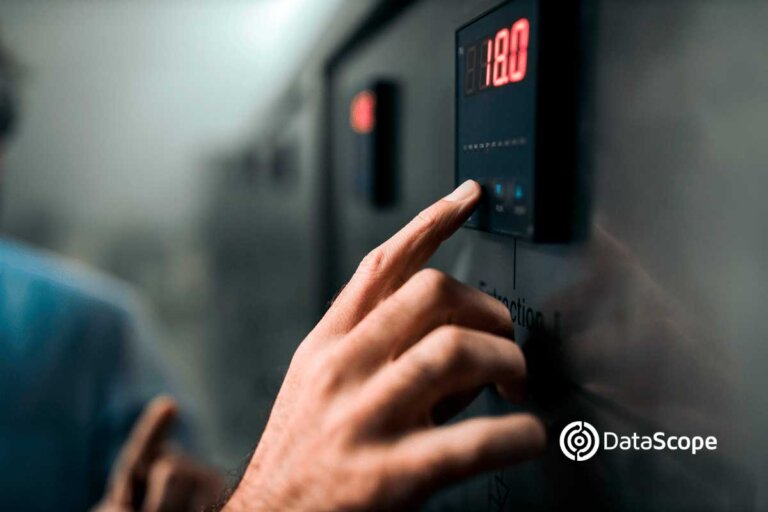One of the fundamental principles in labor laws is the control of the workers’ attendance. Establishing the exact number of hours worked, each person’s entry and exit times, overtime hours and absences for matters no related to the job is a pillar of the employment relationship.
In the era of digital transformation, an electronic system can be added to the classic attendance registry book and the clock with registration cards, which is capable of collecting, storing and processing the information of a team that is in the field, helping bosses and collaborators to have an efficient control of their working hours.
Requirements for an electronic time attendance control
Following the rules that regulate work activity, computer systems for the control of attendance and calculation of worked hours must meet the following characteristics:
1. Markings
We may start from the basis that, regardless of the type of attendance record system used by the employer, there is an obligation to perform an attendance control, based on a voluntary act and not forced or controlled in person by a boss or manager. Full name of the worker, number of his national identity card, date, hour and minute in which the working day begins or ends and the employer’s data must be recorded. Optionally, the employer can include information about leaving or returning from lunch.
If there is any problem when performing these markings, it is recommended to generate an alert indicating the day, time and place of the failed operation, also issuing an operation code and an error message, which will be stored in the system and delivered to the worker, either in paper format or by an electronic delivery system.
Finally, everything must be transferred online to a central database, leaving an orderly and online record, which can later be accessed from fixed or mobile computers, notwithstanding the backups that may be additionally contemplated.
2. Identification
Electronic attendance control can be carried out in person or by remote login, using laptops or computers located outside the employer’s establishment. It is possible to use biometric parameters, cards with a magnetic stripe or other identification documents, keys or passwords, tokens, among others.
It is essential to be certain about the identity of the person making the respective mark, the date of the event and, if applicable, its location. All without the chosen identification mechanism violating the fundamental rights of dependents.
If cards with a magnetic stripe are chosen as a means of identification, it must be associated with the number of the worker’s national identity card and have it printed along with their full name.
When the attendance control system is carried out through mobile devices, such as cell phones, these must always be carried by the worker. The idea is that the team should always be available for markings. The system must prevent that determining the time of registration is exposed to the sole discretion of the employer.
In the case of using passwords for attendance control systems, these must allow the workers who possess them to modify them without any restrictions other than the minimum security parameters, such as the quantity of numbers, letters or use of capital letters.
An alternative control formula should be considered, for instance, when people have problems in front of a biometric record. Approach cards or keys are some options.
3. Identification receipts
The chosen attendance control system has to automatically deliver some kind of receipt to the worker. The device must deliver this endorsement physically, with a printer, for instance, or electronically, automatically sending it via email to a personal or institutional mailbox that the worker must inform for this purpose.
The employer can use an intranet, touch screen totems, among other resources, to improve the availability of information, but the obligation to deliver an attendance control voucher will not be understood as fulfilled as long as these are not sent automatically by email, information that must be recorded in the respective employment contracts or annexes thereof.
All the vouchers must indicate, at least, the date and time of the marking, the number of the worker’s identification card, the ID, the business name and address information of the employer. If the registration is carried out with portable equipment with a global positioning system (GPS), the receipt must also indicate the place where the marking is made, with the greatest possible accuracy.
4. Weekly reports
Given the ability of current computer systems to automatically obtain summaries of weekly, monthly or other amount of hours worked, employers who opt for them will not have the need to generate and maintain signed forms or attendance books.
5. Service availability
The employer is responsible for the operation and maintenance of the attendance control system. This implies giving the worker the assurance that he will not lose the possibility of recording the events associated with the shift.
Likewise, the stored information must be backed up on external storage devices, from where it can be recovered in the event of an incident. In addition, the databases must have security systems that prevent access to unauthorized personnel, preventing the adulteration of the information.
6. Verification
The system must be verified by the company prior to its commissioning. The process must include the review, at the software and hardware level, of all the technical, functional, security and inviolability aspects indicated in this report.
During the analysis, aspects related to:
–security – incorporating measures to prevent the alteration of information or unauthorized intrusions
–confidentiality – ensuring the display of information according to the relevant and appropriate security profiles for each function
–availability – considering components and technological developments that ensure the permanent availability of the information that is stored, for consultation through the web
–geolocation – so that when the control is carried out through a GPS system, up-to-date equipment and high technological standards are used
–functionality – culminating in a report that supports the tests to which the attendance control system was subjected.
7. Auditing access
The existing information must be updated and available at all times for the work of the auditors, this being the responsibility of the employer.
8. Compatibility with other systems
The digital attendance control must operate with the principle of complementarity with other systems. There are cases, such as construction, where more than one system may be required and the important thing is that they complement each other.
What benefits does an attendance control system offer?
By using a digital system, it is possible to manage, store and access information in real time. Now the information can be immediately obtained from a computer or mobile device.
For the company, the implementation of a digital attendance control provides an efficient solution in terms of absenteeism control, as well as time savings by automating the management of key information on the attendance record, calculation of overtime, permits, shifts, among other key data for supervisors, bosses and the Human Resources area.
In addition, it allows you to generate reports and a series of statistical data that can be used to visualize the general performance of the company more efficiently. They support the struggle against fraudulent behavior, such as the marking of attendance made by third parties.
Finally, they grant greater guarantees in terms of data security, as they are stored digitally and protected on external servers.
Regarding the workers, the benefits point to greater transparency in the registry, access to statistics that they can access to analyze their own behavior, in addition to reviewing their absences, overtime and other relevant information.
Time optimization is also a factor here. This is because having quick and organized access to this type of information benefits the worker, who does not have to spend too much time reviewing his information in real time and through fixed or mobile devices.
¿How can DataScope help you get the attendance control of your field team?
When a company needs to have control and offer a high standard of service of its workers in the field, an attendance system allows establishing a flow of communication between the office and whoever carries out the actions outside it.
With such a digital tool, it is possible for a field technician to remotely receive a full specification work order from their supervisor to complete their work. In turn, the supervisor receives the completed work order back and signed by both parties for validation. And finally, the client receives a copy for his backup.
The advantages of this type of automated systems provide greater efficiency to the field team, the possibility of centralizing the collected data, generating automatic and personalized reports, among other characteristics that allow reducing execution times and offering a quality of service that benefits both the company and its customers.







